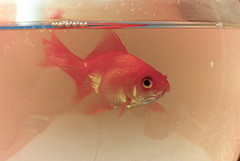Yesterday, as I went to work, news broke that actor and comedian Robin Williams had been found dead in his flat in a suspected suicide. Today, as I woke up, the UK newspaper front pages were being released on Twitter.
The Sun and the Metro have decided to go with details of how Robin Williams killed himself, while the Mail and the Mirror focussed on the reasons why. (The Mail Online goes into excruciating detail on the methods Williams used, but does so in the body copy of an article.) All four are cheerfully ignoring the Samaritan’s guidelines on media reporting of suicide, which cite evidence that “Vulnerable individuals may be influenced to engage in imitative behaviours by reports of suicide, particularly if the coverage is extensive, prominent, sensationalist and/or explicitly describes the method of suicide.”
Let’s be clear, this is not a hypothetical danger: a review of almost 100 studies worldwide has found a strong, coherent and consistent association between certain types of media reporting and increased risk of suicide in vulnerable people, and the Bridgend suicides should be known by every UK journalist as an example of how the media can make things worse.
This is happening in the UK, where funding is being stripped from already-stretched mental health services at the same time as punitive welfare policies strip money from the poorest and force severely unwell people to attempt to work despite disabilities that make it impossible for them to do so safely. A population that is already incredibly vulnerable is being made more so by lack of access to treatment and to funds. The UK is currently in the grip of an acute mental health crisis. This context is important.
The reason the media isn’t supposed to talk about methods used is because that knowledge can turn someone who is passively suicidal into someone with an active plan. Knowing the distances dropped, the ligatures used, the medication taken, the blades employed, all of these things can give a suicidal person the knowledge of how to actually do the deed, how to go about taking their thoughts from the realm of the hypothetical into the realm of the real.
Of course, if they want, they can just Google that information, but that requires an act of will on their part; there’s a barrier that acts as another check, a moment where someone might look at what they are doing and consider other possibilities. Google also places helpline numbers prominently in its search results, which is more than some media manages in its reporting. (Side note: there is a story to be written about what changed in September 2010.) Plastering that knowledge all over every newspaper someone sees on their walk to work, in their local supermarket, in their train carriage, negates that barrier completely. It says: here is how you successfully kill yourself.
Even if they don’t contain step-by-step instructions on how to kill yourself, a wall of front pages tying suicide to a specific cause lends justification to a suicidal person’s internal logic that says suicide is a rational response. Suicidal thoughts are, for many people, a temporary problem; distracting yourself from them is a valid and sensible response, and sometimes the only way to stop yourself acting on them. It’s hard to maintain that distraction when a celebrity dies in this way; it’s harder still when the media seems to buy into the idea that money troubles, for example, are a reason for suicide. There is, inevitably, a search for meaning, and a desire to rationalise what’s happened, but reductionist and intrusive stories hurt the families of those who have died by telling them, in effect, that there might have been something they could have changed. They also tell suicidal readers that there are good reasons to die, sometimes; they reinforce the grim logic of acute depression. You can do this even with the most gentle, most well-meaning attempts to memorialise someone’s life.
The flip side of the media response is a slew of articles tying Robin Williams’ comedic genius inextricably to his depression and struggles with addiction. But he was brilliant despite his mental illness, not because of it. We search desperately in cases like this for a spark of hope, a positive spin, and find it in “divine madness”: the idea that his genius could only exist alongside his sadness. But without his brilliance, the madness would remain, and without his madness, the brilliance might have shone so much more brightly. You can be a genius without being depressed, and generally those without major chronic illnesses get a lot more done and have longer lives. There is a strange ambiguity about the “divine madness” narrative that feeds in, at lower levels, to anxieties about getting treatment. What if, without the depression, I am no longer me? What if I lose my creative spark? What if I lose the last of what makes life possible?
But the onus is still on us, the mentally ill, to seek treatment despite our (not always unfounded) fears that it might not work and might even harm us. We are told to talk about depression more, when talking is just about the last thing a depressed person wants to or feels able to do, and when most people aren’t interested in listening. We’re told to seek help, when in reality that help is often unavailable. The last time I needed serious therapy, it took 12 months for an appointment to become available; that was before the current crisis. I cannot imagine I would be able to negotiate the barriers to NHS assistance if I were suicidal in London this morning, even in my position of relative wealth, insight and access. But it’s entirely plausible that Robin Williams did manage to get the help he needed, and it just wasn’t enough. It isn’t enough for a lot of people. A lot of people die despite excellent care. We need more research, we need more treatment options, we need a revolution in mental healthcare. What we get are front pages that make our illnesses worse.
Fundamentally, the media doesn’t care about the guidelines. It doesn’t care about the people they’re meant to protect. Mentally ill people who die come in two types: the talented and brilliant, for whom death is an inevitable part of their brilliance, and the poor and underprivileged, whose deaths are irrelevant except where they interact with an existing story. The media doesn’t care about our deaths, unless we’re famous, and then it will pore over every gruesome detail regardless of how that might affect those of us still living, still struggling, still reading the news and still fighting for hope every day. What does it matter, after all, if a few more people succeed in killing themselves in the next few weeks? They were depressed. There was nothing anyone could have done.

